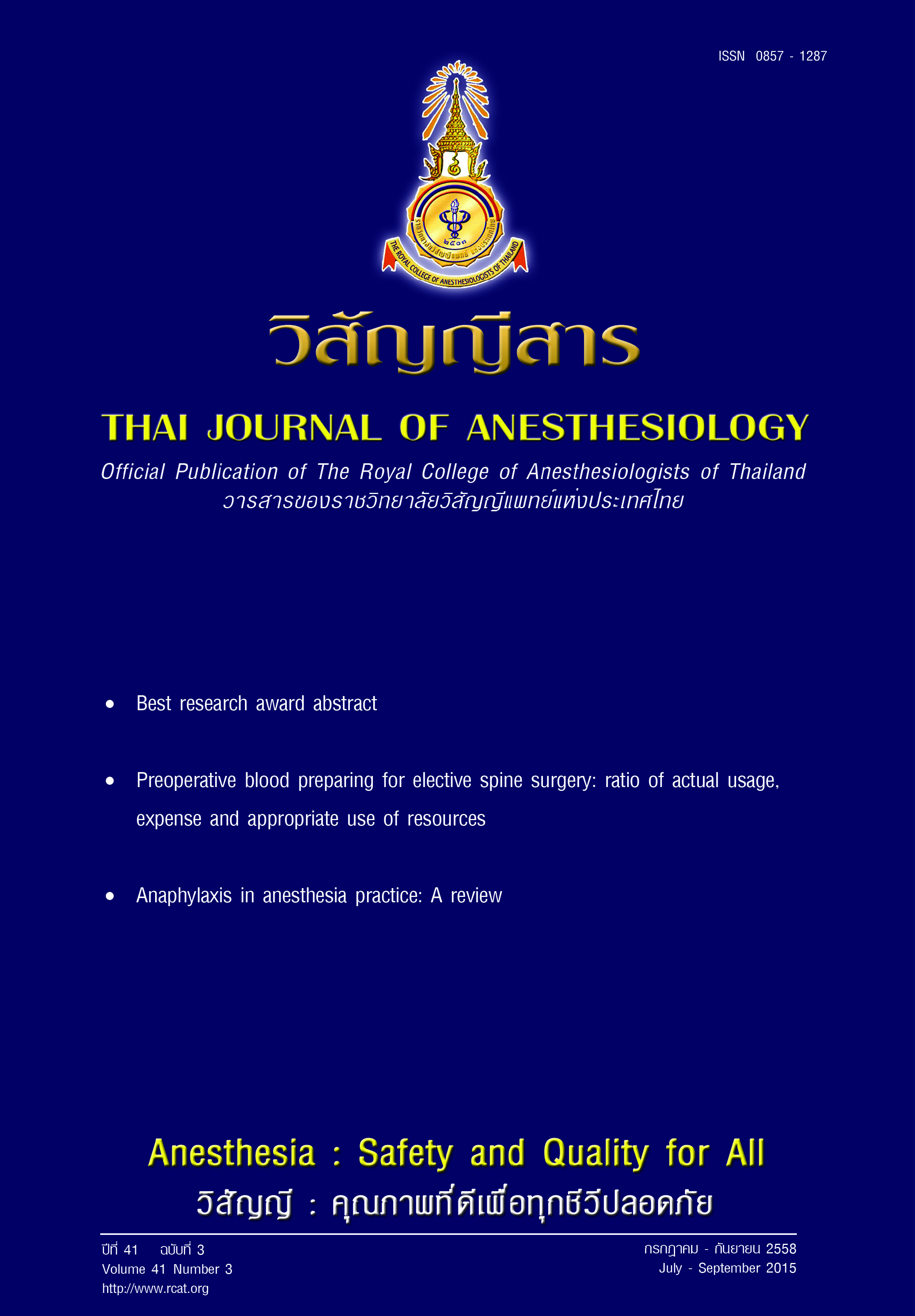Effect of Addition of Ondansetron for PONV Prophylaxis in Ambulatory Hysteroscopy with Propofol TIVA
Main Article Content
Abstract
Background: In female patients undergoing hysteroscopy in outpatient unit, total intravenous anesthesia (TIVA) technique with propofol is frequently used as induction and maintenance drug. Ondansetron is often given as an antiemetic drug even if propofol infusion has proven to have antiemetic effect (1, 2). We hypothesized that the addition of ondansetron prophylaxis does not alter incident of postoperative nausea and vomiting (PONV) and postdischarge nausea and vomiting (PDNV) in patients undergoing hysteroscopy with propofol TIVA technique in the ambulatory setting(3).
Method: 110 female adult patients scheduled for hysteroscopy in an ambulatory setting were randomized into a control group (C group) who did not received any antiemetic drug other than propofol infusion and an ondansetron group (O group) who received 4 milligrams of ondansetron after induction. Patients’ baseline characteristics, including Apfel’s score, duration of anesthetic and surgical procedure, and dose of any drug given were recorded. The incidence of PONV was recorded in PACU and 2-day incidence of PDNV was gathered by telephone interview within 2 weeks.
Results: There were no incidences of PONV reported in PACU in both groups (P > 0.99). The overall incidences of PDNV were lower in the control group, but not statistically significant (14% vs 5.9%; P = 0.2). Daily incidences of PDNV had no statistic differences. Pain scores, inpatient admissions, and other complication incidences had no significant differences.
Conclusion: Addition of ondansetron prophylaxis does not alter incident of PONV and PDNV in patients undergoing hysteroscopy with propofol TIVA technique in the ambulatory setting.


